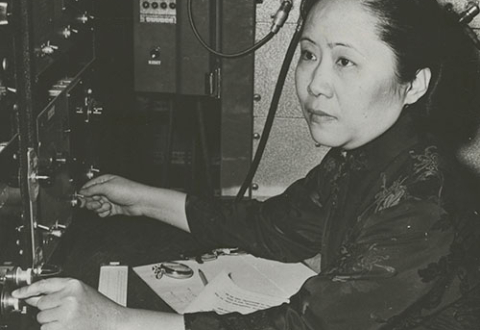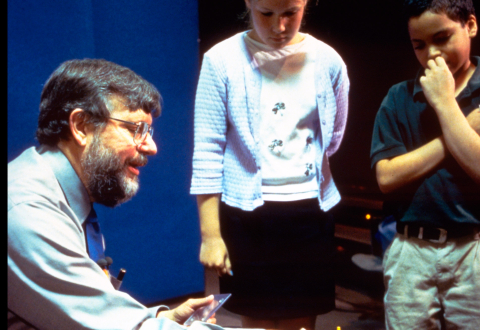At the University of Wisconsin during 1965-1967, a team led by particle physicist Ednor Rowe built a machine designed to analyze what goes on inside high-energy particle accelerators. This was the big, exciting technology in physics at the time. But just as the apparatus neared completion, funding was cut off. Its creators, feeling teased by fate (and their government backers), dubbed the machine "Tantalus."
Rowe knew, though, that a by-product of Tantalus's operation was intense "synchrotron radiation," a form of ultraviolet light that is used to study the structure of matter. He quickly adapted the machine to make this radiation available for use and soon the facility was crowded with experimenters from all over the world. Tantalus not only pioneered the use of synchrotron radiation, but created a research facility where both scientists and graduate students could perform hands-on work.
Researchers shared information and the results of their experiments in a collegial environment. There was no "King of the Ring" among these goal-oriented scientists. Those working at the Synchrotron Radiation Center always sought ways to improve upon Tantalus, with the result that Tantalus remained an important research tool until 1987, when it was retired and replaced by a newer machine, "Aladdin."
In March 1994, Ednor Rowe contacted the National Museum of American History about the decommissioning of Tantalus. Museum curators decided to add part of the Tantalus accelerator ring to the collections in modern physics and also collected written documentation in the form of operational and data notebooks and logbooks that trace the creation, building, maintenance, and experiments carried out on the machine. There are also black and white photographs, slides, and video documentation.
With the support of the Lemelson Center, the curators conducted video history interviews with Tantalus staff Ed Rowe, Fred Brown, Cliff Olson, Charles Pruett, and Roger Otte. These discussions and reminiscences capture the human side of this high-tech machine's history.





